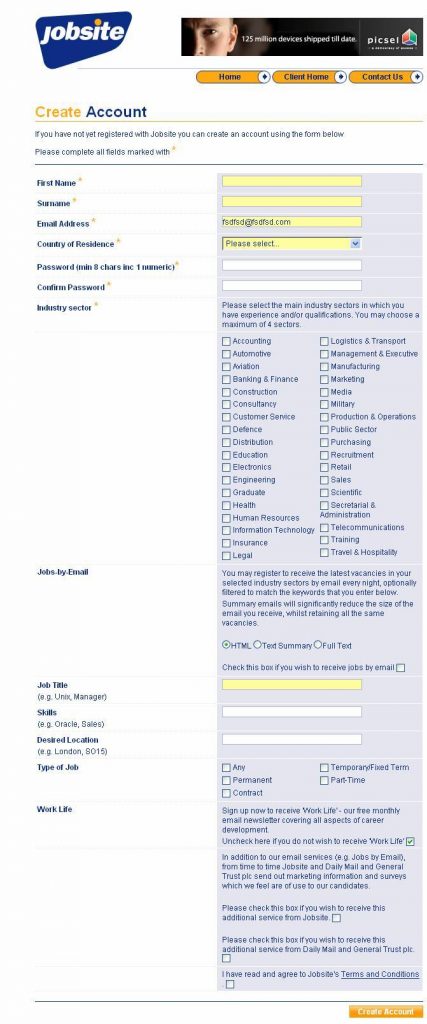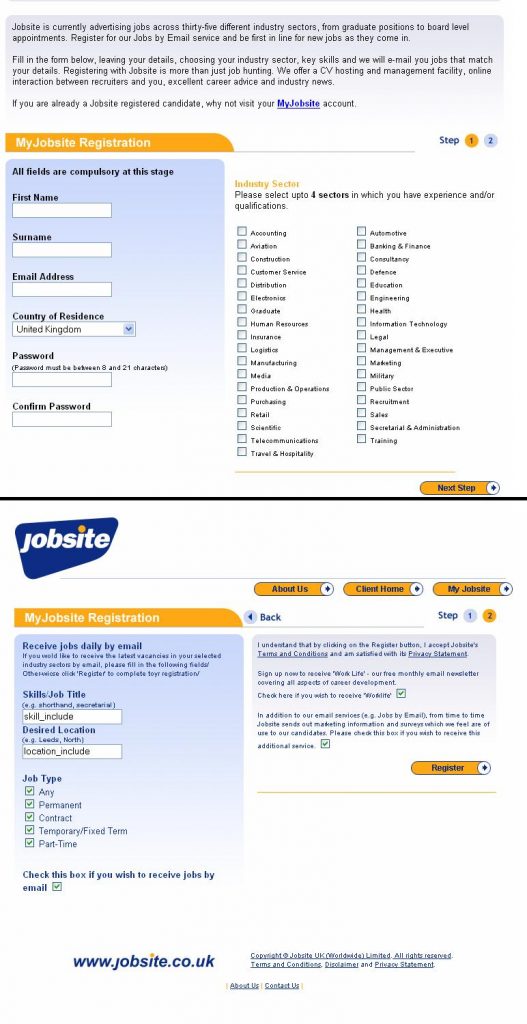An inordinate amount of time, effort and money goes into optimising paid search accounts. If you’re good at it, you can either save a lot of money, or get a lot more bang for your buck.
Anyone that has done paid search advertising will know that you can make some big improvements quite quickly just by optimising your accounts (I say ‘just‘, there can be a lot of work involved and unless you’re blessed with such talents it usually involves getting in a specialist or search agency to help).
However, there comes a point where the changes you make result in smaller and smaller gains. It’s still getting better but you’re not getting as much return on your efforts as you once did. This leads to a belief that the only way to achieve more conversions is to increase the budget.
Wrong. There is in fact, a massive opportunity staring you right in the face. The problem is you can’t see it because you’re probably looking in the wrong place.
Chasing your tail
Tell me if this sounds familiar.
You need to bring in traffic to your site, traffic that converts, buys your product or uses your service. You set up paid search accounts, organise your campaigns, ad groups, keywords and tracking URLs. You choose a page on your site to send them to (or knock up a bespoke one for that purpose, because that’s better right?) and start feeding Google the cash.
You check the reports, you make some tweaks, you fist pump when the conversions improve, you pour in more cash, report, tweak, fist pump, cash, report, tweak…until you reach the point when you run out of ideas to make it work better.
Enter, landing page optimisation.
Where did it all go wrong?
I say enter landing page optimisation, but to be perfectly honest, you should really be doing this right at the beginning of your campaigns, not when you’ve run out of ideas.
So how did we end up here?
There are basically two common mistakes with approaches to landing pages (or any website pages, in fact).
1. The ‘Build it and Leave it‘ approach – usually found in companies under-resourced or over capacity with ideas. There is so much going on and not enough time to do it. So the first page up there is staying up and don’t even think of slowing down the next project in the pipeline, thank you very much.
Unfortunately, there is a very high probability that this page is not the best it could be at converting your endless stream of – paid for – traffic. Whilst your company is quickly moving on to the next project to make money or improve efficiency, you’re busy pouring part of your marketing budget down the drain.
2. The ‘I Know Best‘ approach – is found everywhere experienced, enthusiastic, opinionated people are striving to make their company successful (it’s also found in companies where people couldn’t give a hoot for that matter).
Regardless of intention, sometimes that experience, enthusiasm and opinion can get in the way of making the right decision.
Avinash Kaushik, Google’s Analytics Evangelist and author of Web Analytics 2.0, describes this quite nicely when he talks of HiPPOs (Highest Paid Person’s Opinion). In a room full of potential contributors to a solution, the HiPPO’s way is invariably the way that it’s going to be. It’s not necessarily the wrong solution, but it isn’t always right. It’s just human nature – in times of tricky decisions we tend to look toward authority first.
The MVT Generation
The answer to both problems can be found in data. Yes, I know, big yawn, but trust me, when you use it in the way I’m about to describe you’re actually going to get excited about data.
What you need to do is employ Multivariate Testing (MVT).
If you’ve never come across the term before, then essentially, multivariate testing is a process by which multiple components of a page (or pages) on a website are tested simultaneously in a live environment to determine the variant with the highest probability of achieving your goal.
In other words, test a whole bunch of variations of the same page to find out which version is more likely to get your visitor to convert (i.e. purchase / sign up / download, etc.).
The great thing about multivariate testing is that it removes ego and opinion from the process. It relies entirely on data from real activity on your site. This is true customer led design. Who better to determine how your site should work than the people who actually use your site?
And for this small concession, this release on decision-making, you get better conversion rates. In other words, you get the greater return on investment you were looking for.
CASE STUDY: Jobsite.co.uk increase registration sign-ups by 103%
In the not too distant past, Jobsite were sending PPC traffic through to a site registration form, with a goal of increasing volume and lowering cost per registration. It wasn’t a particular pretty page – a clunky two column design made it unreasonably long, despite the minimal number of questions.
Start Simple – A/B testing
We started our experiment with a simple A/B test (one version versus another). As ever, you need a default design (A) to compare against the new version (B). In this instance, A was the single page form and B was the same form split over two pages.

Variant A – Single Page

Variant B – Two Pages
There is a web convention that says you should minimise your user journey to increase the likelihood of the task being completed. It’s not unreasonable to view this as a recommendation to minimise the number of pages.
Well, in this case, it didn’t work out that way. Sometimes conventions just have to fall by the wayside.
Our visitors preferred to complete the process over two pages, as we experienced 30% uplift on Variant B over Variant A.
Whilst unconfirmed, it could be surmised that breaking the form into two chunks made it a less daunting task for the visitor.
Step it up a gear – multivariate testing
Next, we moved to testing the elements on the two pages – titles, text, buttons, colours and positioning.

Multivariate testing page elements
How this works technically will vary depending on the MVT product you use. Essentially, you get to slice the page up into element boxes and the software will create variations of your original page using different combinations of these elements. This could result in 5 pages, 50 pages or 500 pages, depending on the number of elements involved.
The software will then serve these variations to visitors in a live environment. You do need a reasonable amount of traffic to the page to run a test; otherwise the sample size will not be sufficiently robust to make an accurate assessment.
As visitors interact with the test pages, the software will identify page combinations that are converting higher than the default page. More traffic will then be diverted to those pages to test the indication. The test will continue until a point where a page (or pages) has established a clear higher probability of outperforming the default page.
Depending on traffic levels, this could take a few days or several weeks.
At the end of the Jobsite test, the winning combination of elements produced a page that increased registrations by an incredible 103% over the original page.
Looks like hard work – do I need it?
If a significant proportion of your marketing budget each month is spent on PPC to buy in new business, then you need to be doing multivariate testing.
What do you think the reaction would be in your company if you reported a 100% increase in conversions?
Let’s make up an example and do some sums:
PPC spend of £10,000 – gets 15,000 visits – converting at 5% = 750 new customers
Average spend per customer = £20
Revenue = £15,000
50% higher conversion following A/B test (1125 new customers)
Revenue = £22,500
100% higher conversion following multivariate testing (1500 new customers)
Revenue = £30,000
Now I’m not saying multivariate testing is guaranteed to get you a 100% increase in your own key metrics, but it is possible. The important thing to remember is that every site, every page and every audience is different. What works for one site does not necessarily work for another. You have to test it for yourself.
A few landing page tips
To get you started, here are some pointers on good practice for designing landing pages. Remember, your site is different to my site, so experiment.
- Streamline to one objective on the page.
- Minimise on-page distractions and means to navigate elsewhere.
- If you’ve pushed visitors to the page (e.g. via PPC), ensure the page meets their expectations. If you’ve promised a free whitepaper, do not dump them on your homepage and expect them to go find it.
- Minimise the work of the visitor – keep it simple and collect only the data you need.
- Experiment with differing headlines, buttons, images and calls to action.
- Consider adding examples of social proof – e.g. testimonials or statistics – to demonstrate why the users should be following the wisdom of the crowd and signing up to your service.
Multivariate Testing Tools
I have experience of using Maxymiser and Google Web Optimizer and both have done an excellent job. Maxymiser is the more advanced offering of the two and they can provide an account team to minimise your workload (they’ll help set up the test, design the page elements and provide you with reporting), but obviously this comes at a price.
Conversely, Google Web Optimiser is a free service, and hence you don’t get all the bells and whistles, but it is a very good piece of software and is perfectly capable of doing the tests most people need.
Other multivariate testing providers include:
Next up
As you can see, multivariate testing can be a game changer for you and your company. On a personal level, it’s a great opportunity for you to make a substantial difference in your own performance. Big improvements at no extra cost tend to get you noticed.
I for one will be doing a lot of testing in 2010. I have a very exciting test underway, as I look to understand how above the line TV advertising impacts online conversion metrics. I’ll share the results at a later date.
I’d be very interested in hearing your own multivariate testing stories. Either leave comments here or share them with me on Twitter.
